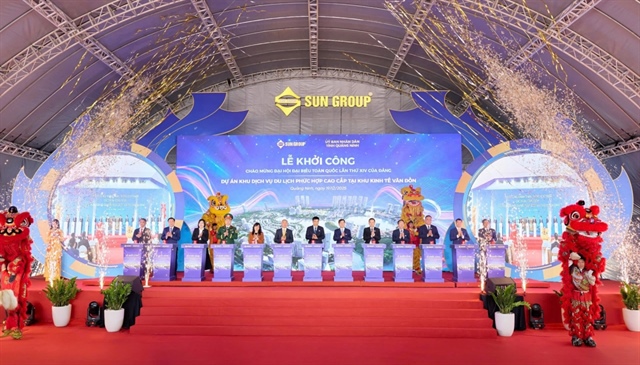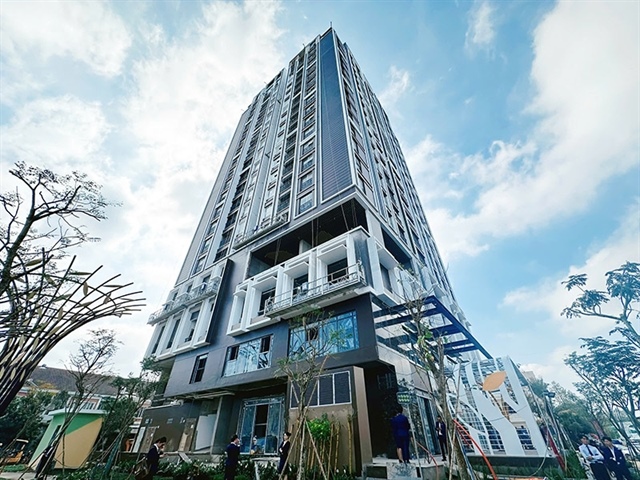Risks from legal hurdles
Risks from legal hurdles
Vietnam’s property market with an incomplete legal framework is still nascent compared with those in other countries. Major risks surface when the legal framework improvement fails to keep pace with the rapid evolution of the market. The shortcomings in the legal system and policies related to real estate were one of the crucial factors affecting the development of the market in 2018 and perhaps the years that follow.

Twenty nineteen was an exceptional year for HCMC’s condo market when the supply-demand balance sharply tilted toward the demand side. The limited supply came from a handful of projects that managed to complete the legal documents in the previous years. According to statistics released by the HCMC Real Estate Association (HoREA), the market supply for the first ten months of 2018 declined 39.2% year-on-year.
Such shortage is ascribed to the bottleneck in the regulations on land origin stipulated in the 2014 Housing Law, with which housing developers must comply to win approval for their projects. The law, effective from July 2015, stipulates that only residential land is qualified for the development of housing projects without competitive bidding. Up to 70% of the 170 projects whose applications were submitted after the effective date of the law failed to meet such requirement, which leads to the shortage of housing projects in the city, says the HCMC Department of Construction.
It is currently unknown whether such requirement is a “mistake” of lawmakers or an intentional ruling issued to achieve a tighter control on the licensing process for property projects. No matter what the truth is, it has influenced market development tremendously. In a healthy market, demand is the driving force for supply. And when supply falls short for some reason, speculators will be out there to push prices up.
That was the case of the apartment market in HCMC last year. Those lucky projects whose developers managed to complete the legal documents opportunely were open for sale at a sky-high price compared to other projects in the area despite a lack of advantages in location or quality. The reason for this phenomenon, which both sellers and buyers agree upon, is the short supply. The price hike which is not triggered by fundamental factors indicates that market demand is tilting toward swing traders. And this certainly affects the market’s healthy development, even after the legal hurdles are removed, when the price would already be at a new level.
The financial capacity and potential of professional realty developers are often evaluated based on the land funds in their possession. However, that principle does not apply what is happening in the current context. Those who have spent huge financial resources developing land funds are probably sitting on tenterhooks as legal hurdles are denying their possibility of project implementation. Even when supervisory agencies consider dealing with the legal hurdles to the real estate sector, the situation would not get better overnight because the legal document in question is under the jurisdiction of the National Assembly. While waiting for amendments, the financial burden on realty developers may become increasingly heavy in the coming years. Meanwhile, house prices will further skyrocket to go beyond the reach of the majority of people actually in need.
Legal space for “hybrid” products
The policy lag found between the legal system and market development is understandable. The market always has its own reasons and movements, which lawmakers can hardly project at the time the law is enacted. However, being too belated in responses market changes isn’t comprehensible at all.
The number of officetels erected nationwide in the past three years is about 12,000. Meanwhile, condotels have numbered 30,000. Along with that, over 5,000 resort villas have been built, according to the market search firm CBRE. Those figures of supply are absolutely not modest. However, the aforementioned products are now in the gap caused by effective real estate-related laws. Regulations concerning land, construction standards and planning have not made it clear with those types of products. For instance, whether buyers of such products are granted a certificate of ownership or not remains an awkward question.
Given a market worth tens of billions of U.S. dollars, such a legal gap is undeniably huge. The fact that the above-mentioned products can exist and grow on such a large scale suggests they come from the real need of the market. Still, the real need is prone to changes if legal gaps are not bridged. A classic example is that officetels are now designed and sold as long-term residences instead of serving as workplace and short-term lodging facility. Of course, officetels are not to blame, but the legal framework and the method for management of that type of product are.
The slow introduction of legal guidelines for new categories of products poses risks to both consumers and project developers. Furthermore, the market and society in general fail to fully unlock the development potential of such products. For example, if there had been a complete legal framework, the condotel supply would have grown much more rapidly in response to the boom of Vietnam’s tourism market.
Following the 2011-2012 crisis, a new policy framework for the property market was established with a series of important laws issued in 2013 and 2014 regarding land, investment, construction, housing, and real estate trading. This was one of the crucial factors which helped revive the market thereafter. Such legal system should have been constantly improved to keep abreast with market evolution. To do so, any hurdle identifiable must be quickly cleared.
























